‘New’ Parliament House is historically significant as the home of the South Australian House of Assembly since 1889 and the Legislative Council since 1939. The building was also the venue for the intercolonial Postal and Telegraph Conference of May 1890 and the Australasian Federal Convention of 1897, which was the first of three conventions working to finalise an Australian constitution for a federation of the colonies.
Burgeoning local pride and assertiveness are evident in its design and use of South Australian building materials. Construction commenced at the height of an era when substantial public buildings were being erected in dressed stone – in this case the stone was predominantly marble. Parliament House is striking on all four sides. Even the rear of the building, with its elegant balcony, rises impressively over the Adelaide Festival Centre below. Its architectural significance has been preserved by the absence of external alterations (Marsden, Stark & Sumerling, p247).
But Parliament House has not always been an imposing feature of the city. Between the completion of the West Wing in 1889 and opening of the East Wing in 1939 war and limited finances meant that it stood unfinished, and unsightly, for 50 years.
Plans for a new Parliament House
Members started to complain about the cramped, airless conditions of Old Parliament House soon after the 1855 building was finished. In 1864 a parliamentary select committee recommended that designs for new buildings be called for and that they be located on vacant land between the existing premises and King William Street (then City Bridge Road). However, design tenders were not called until 11 December 1873.
The successful design, submitted by architects Edmund Wright and Lloyd Tayler, shows the influence of the Leeds Town Hall (completed 1858) on public architecture at this time. The proposed building was Victorian Academic Classical in style with a large central portico supported by Corinthian columns. An ornate tower, topped with a dome, rose high above the portico. Smaller side towers were located above columned projections at each end of the front of the building. While Wright and Tayler’s design was generally well received, it was beyond the financial resources of the colony. Parliament determined to modify and extend existing facilities instead.
Even so, debate about the most appropriate site for a new building continued. Some argued that the land on the corner of North Terrace and King William Street was required for railway expansion. Four alternate sites were suggested: two on the west side of Victoria Square, Government House land west of the Institute Building on North Terrace and the site of the Jervois Building (now the Mortlock Wing of the State Library). In 1877 an Act was passed authorising the annexation of parklands on the corner of North Terrace and King William Street. This decision was confirmed in 1879, but construction stalled.
West Wing – House of Assembly Chamber
In 1881 parliament determined to proceed. To minimise costs, the Architect-in-Chief’s Office was given oversight of the project and Colonial Architect Edward John Woods was instructed to make significant modifications to the original plans. Woods was later credited with the design without due recognition of the earlier work of Wright and Tayler. Kapunda marble and West Island granite were chosen as the main building materials with the clear intention of supporting local industry and showcasing South Australian products. Construction of the building to accommodate the House of Assembly commenced with the appointment of the Kapunda Marble & Building Co. as builders in July 1883.
The marble for the superstructure was sourced from the company’s quarries around Kapunda. The granite for the base was supplied by Andrew Oliver of Victor Harbor. It was mined on West Island (c. 1km offshore), shipped to Port Adelaide, then taken by horse and cart to the railway nearby for transport to Adelaide. The foundations allowed for the future construction of the central tower and dome.
Persistent quality of work issues led to the cancellation of the contract with Kapunda Marble & Building in 1885. The halt to construction threw over 100 men out of work during a period of high unemployment. A tender by builder James Shaw for completion of the building was accepted in February 1886. The site then provided work for 95 men. A further 60 men were employed at a marble quarry leased by the government. The job was finished in June 1889.
The West Wing was a marvel of new technology and the envy of the Legislative Council which remained in the stuffy environment of Old Parliament House. An up-to-date ventilation system, driven by a gas engine, renewed air in the House of Assembly Chamber every 20 minutes. The air was supplied via louvered openings in the side walls and gratings under each table. In summer, air drawn into the building through a small tower inlet in the roof was cooled by passing over trays of cold water. In winter it was warmed by passing over hot pipes. Rooms were lit by gas lighting, but wiring was also installed to enable electricity to be used in the future. At the head of the chamber, on the clerk’s table, buttons could be pushed to summon messengers. Electric bells were located in every room to call members to the chamber.
The exterior of the building was finished with elegant marble steps, curving up to the entrance on North Terrace. The two cast iron gas lamps made by the Adelaide firm of GE Fulton & Co. are still in place. Internal staircases were also made of marble. Black and white marble tiles lined the corridors.
The West Wing was opened on 5 June 1889 with an ‘At Home’ hosted by Sir Henry Ayers (president of the Legislative Council) and John Cox Bray (speaker of the House of Assembly). More than 1000 guests, including Governor Kintore, were present. The House of Assembly Chamber was declared open by the speaker at the House’s first meeting on 6 June 1889.
The chamber was richly decorated. Its high walls, with fluted pillars, rose to a gilded and panelled ceiling. Seven porcelain chandeliers lit the chamber. Portraits of past speakers and premiers were placed between the pillars and framed by cloth drapes. The speaker’s chair of carved American walnut sat on a raised dais at the northern end. Members’ seats were made of walnut with teak panels. The ribbed upholstery and carpet were green with a South Australia motif of grapes, sheaves and wattle. A red border immediately in front of the government and the opposition front benches incorporated Sturt’s Desert Pea, South Australia’s floral emblem.
Galleries above the speaker’s chair housed Hansard and media reporters. The speaker’s gallery, to which approved members of the public were admitted, was located at the southern end of the chamber. A strangers gallery, freely open to the public when the House of Assembly was in session, was positioned above the speaker’s gallery.
East Wing
Sketch plans for the completion of Parliament House, omitting the tower and dome, were prepared by the Architect-in-Chief’s Department in 1913. A parliamentary committee approved the plans, but the project came to a halt with the outbreak of the First World War in August 1914. The plans lay dormant until being revived in 1934 during discussions on how best to celebrate South Australia’s centenary in 1936. Parliament decided that an event worthy of this occasion would be best achieved by a ‘great work of historic interest and national importance’, the completion of Parliament House. It would also provide employment during the Great Depression. A donation of £100 000 by Sir John Langdon Bonython enabled the project to proceed.
Architect-in-Chief AE Simpson drew up plans based on those of 1913. The southern or main façade to North Terrace was given a colonnaded entrance. The prominent eastern façade along King William Road was designed to be in conformity with the southern façade. The rear or northern façade was plainly treated to harmonise with the unfinished northern façade of the West Wing. Work commenced in March 1936 under the supervision of Simpson. The builder was A Slater of Kilkenny.
The completed Parliament House was opened on 5 June 1939, exactly 50 years after the opening of the West Wing. The ceremony was performed by Governor-General Lord Gowrie VC who, as Brigadier-General Sir Alexander Hore-Ruthven, had been South Australia’s governor from 1928 to 1934. Some 450 official guests, including representatives of governments and parliaments throughout the British Commonwealth, were present. About 6000 people watched the arrival of the governor-general and his escort of lancers from the Army Service Corps. A guard of honour was provided by the 43rd-48th Battalion. Six red, white and blue pennants hung from tall poles in front of the main steps.
The 90-year-old Sir John Langdon Bonython, whose memory of parliament stretched back to 1864, commented at the opening that his gift to complete the building would wipe out ‘what could not be regarded as other than a gross disfigurement of one of the most important sites in the city’.
The ceremony was followed by afternoon tea in the grounds of Government House for 2500 guests.
The East Wing housed the Legislative Council Chamber, the Parliamentary Library, committee rooms, parliamentary offices and offices for Hansard staff. The Legislative Council Chamber was of the same dimensions as the House of Assembly and featured Queensland maple panelling and a traditional red carpet. The president’s chair (and vice-regal throne) at the northern end was relocated from Old Parliament House. It was made in 1855 of English oak with carved Gothic decoration and covered in red velvet. Galleries surrounded the chamber on three sides at floor level and on all four sides at first floor level. The galleries immediately behind the members’ benches seated distinguished guests during the opening of parliamentary sessions. Strangers galleries for interested members of the public were located upstairs. Hansard and media reporters occupied the northern upstairs galleries.
Stones, plaques and memorials on the North Terrace façade
There is no foundation stone in the West Wing of Parliament House. But two stones were incorporated in the East Wing and they are located at the top of the steps on the southern façade. One stone citing Edward Gibbon Wakefield as the founder of South Australia in 1834 contains the promise of self-government: ‘His Majesty’s subjects of the Province of South Australia are to receive a constitution of self government as soon as the colony shall be in a state to enjoy that inestimable advantage’. ‘The Promise’ refers to Britain’s promise of representative government when the population reached 50 000, which had been included in the South Australia Act. The other stone commemorates the fulfilment of that promise: ‘This House of Parliament was completed as an expression of faith in the parliamentary institution in appreciation of the benefits wrought by eighty years of self government and in commemoration of the centenary of the State’. The stones were unveiled by Governor Major-General Sir Winston Dugan on 23 December 1936.
A carved stone lion from the Palace of Westminster located to the west of and below the main steps was a gift from the United Kingdom Branch of the Empire Parliamentary Association to mark the completion of Parliament House in 1939.
A plaque commemorating the meeting in Adelaide of the Australasian Federal Convention from 22 March to 5 May 1897 sits to the west of the lion. All colonies except Queensland sent ten delegates to this convention. The committee elected then to draft an Australian constitution comprised Sir John Downer (a former South Australian premier), Edmund Barton (who became the first Australian Prime Minister in 1901) and Richard O’Connor (a Legislative Councillor from New South Wales). Charles Cameron Kingston, South Australia’s premier at the time, presided over the convention and South Australia’s Sir Richard Chaffey Baker MLC chaired the meeting. The plaque was unveiled on 22 March 1951 ‘to commemorate the framing and the adoption by the Convention of the Draft Bill for a Federal Constitution for Australasia’.
At the base of the West Wing steps is a plaque relating to women’s suffrage. In 1894 South Australia became the first colony in Australia to grant women the right to vote. It also became the first place in the world to give women the right to stand for parliament. On the centenary of women’s suffrage a time capsule, to be opened on the bicentenary in 2094, was placed in the vaults of Parliament House. The plaque notes the time capsule and the granting of parliamentary franchise to women.
Events
Parliament House was the focal point for major public announcements and celebrations. The end of the Boer War was announced from its steps in 1902, as was the signing of the First World War armistice in November 1918. The accession of Queen Elizabeth II was proclaimed from Parliament House in 1952. Parliament House also became a focal point for rallies and demonstrations. Public protest marches typically commence in Victoria Square before progressing north along King William Street and ending on the steps of Parliament House.


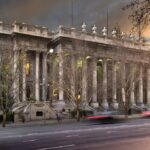

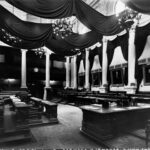
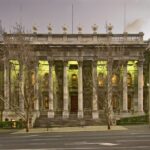
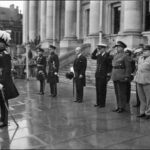
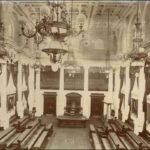

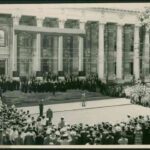
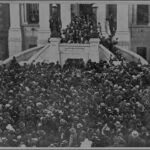
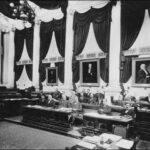
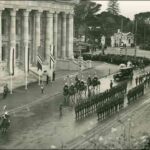
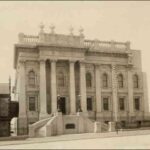
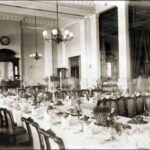
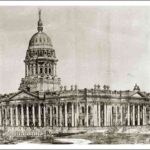
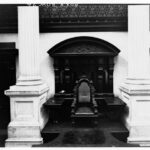


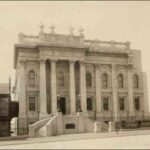
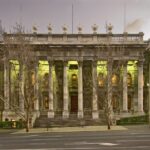
Comments